#cobalt
Text
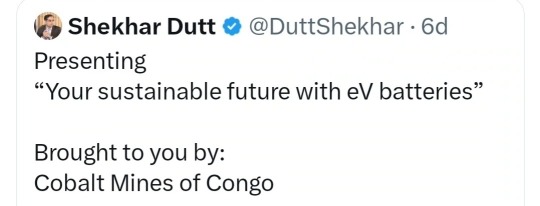
images I screenshotted towards the end of this video clip:


Original Tweet/X Post states: Presenting, "your sustainable future with eV batteries" Brought to you by: Cobalt Mines of Congo.
Twitter/X User Response to this video, originally: What scares me is so much "green" technology and products and such are built off human suffering. The entire world is built on this. The entire world is irrevobaly tied to mass exploitation and I desperately hope that changes in my lifetime. #CongoGenocide #CongoIsBleeding
I have attached a video below these Tweet/X images of Congolese people in Cobalt mines. Video Description: Men, in front of a large, dark brown and muddy area of the mine are digging other men out of a hole that have been inside, excavating for Cobalt. These men are not wearing any protective equipment; other than something to cover their eyes, like goggles and lights attached to them. There is a crowd of people surrounding this area and many are cheering them on; a few men are pulled out due to the velocity/force of being pushed out of the mine area they are coming out from. It looks like the mine is opening up and down like the entrance of a beast's mouth. The exit of this part of the mine opens and closes several times during this video. I took a screenshot at the end of the video to showcase how many people have gathered, and there appears to be hundreds.
*UPDATE: The original person on X, formerly known as Twitter, who posted about this story as a re-tweet, is transphobic. I was unaware, and it was recently brought to my attention. For anyone who has read my pinned post or hasn't yet, I do not align with TERFs/transphobes/transmisogynists. I cropped out the original tweet/X post and added their initial commentary on the video just for context, my apologies for the oversight.*
#feminist#feminism#social justice#intersectionality#free congo#congo genocide#colonialism#colonial violence#congoisbleeding#important#cobalt#fuck capitalism#enslavement
20K notes
·
View notes
Text
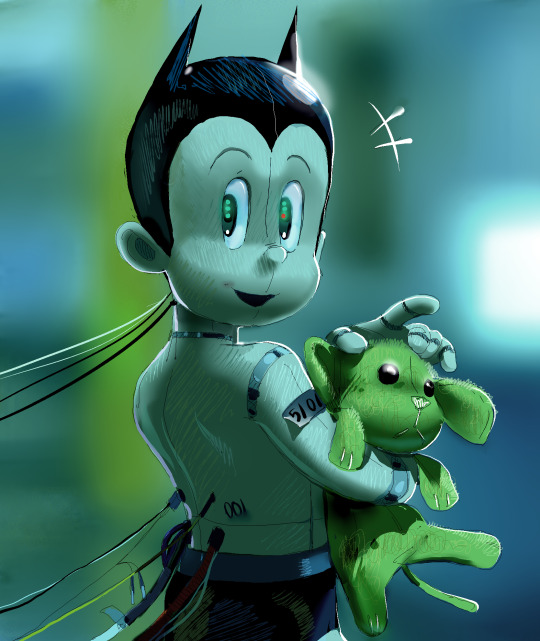
the forgotten prototype
#astro boy#tetsuwan atom#my art#cobalt#cobalt astro boy#i havent shaded anything like this in a while but my boy deserves it!!
4K notes
·
View notes
Text
Y'all still boycotting, right? Still following the BDS movement, right? You still remember that Boycotts are for life, right?? You read that the Israeli Zionist Occupation is connected to other ongoing genocides, e.g. in Congo, right???
#palestine#gaza#free palestine#gaza strip#free gaza#boycott israel#boycott#BDS#boycott divest sanction#starbucks#boycott mcdonalds#israel#genocide#free congo#congo genocide#cobalt#boycott apple#electronics
3K notes
·
View notes
Text
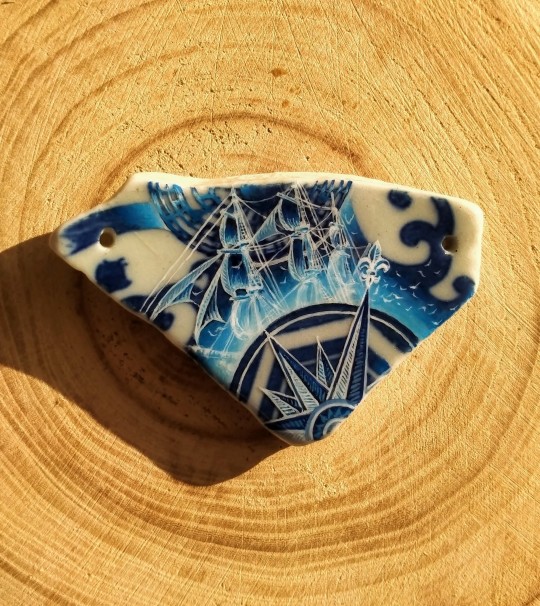

New big pendant for a driftwood and sea glass necklace
#painted miniatures#miniature#tall ship#sailing ship#seagull#sea pottery#sea glass#beach findings#naval#nautical art#cobalt#compass#pendant#jewelry#my art
1K notes
·
View notes
Text

Palestine 🇵🇸 🤍 Congo 🇨🇩 🤍 Sudan 🇸🇩
#free gaza#free palestine#gaza#palestine#from the river to the sea palestine will be free#israel#pray for palestine#ceasefire#america#usa#congo genocide#dr congo#save congo#free congo#cobalt#congo#sudan#free sudan#sudan genocide#one struggle is everyone's struggle
580 notes
·
View notes
Text
FREE CONGO 🇨🇩❤️ please watch this video
#free Congo#Congo#congo genocide#silent genocide#the democratic republic of congo#cobalt#boycott technology#boycott apple#boycott Samsung#boycott hp#keep boycotting#boycott#help Congo#blm#black lives matter#USA#current events#Africa#amplify#amplify this#share#share this#inform yourself#eyes on Congo
546 notes
·
View notes
Text



Some Beautiful Brandt Cormorants during breeding season. I love these blue patches they get! Their eyes are so magical. Free to use, just link back to this post when you do!
#stimboard account#not a board#stimmy#stim gif#stim#luminary stimboards#blue stim#blue#cobalt#cobalt blue#bird#birds#bird stim#bird gif#birds stim#birds gif#feathers#blue bird#cormorant#ornithology#birding#birdblr#wildlife photography#sea birds#water birds#wild birds#brandt cormorant
351 notes
·
View notes
Text
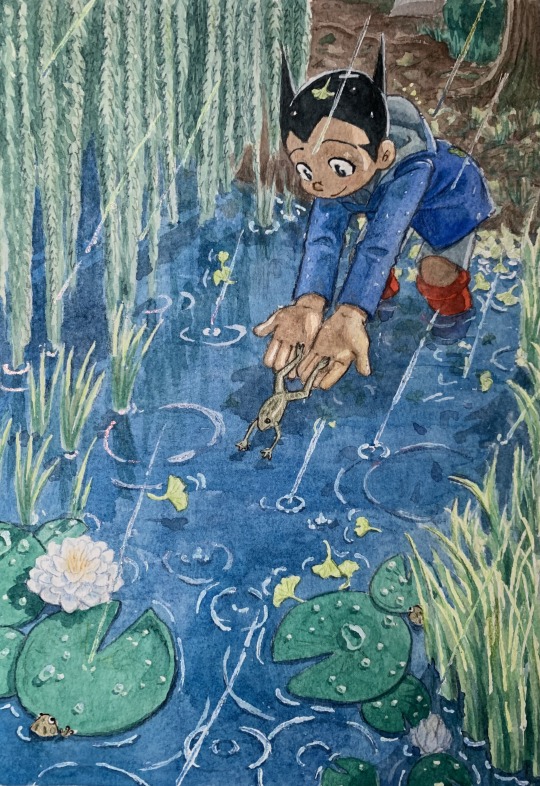
I finally got the time to do a painting!! Decided to give Cobalt a little love! I had some trouble getting the right values with watercolors, and not everything turned out the way I wanted. Still, I’m happy I got to do this, and I think I learned some things on the way too. Bonus close up:

And the preliminary sketch! Admittedly should have done a larger clean layout between this and the final painting, but again, a lesson learned 😅

#astro boy#tetsuwan atom#osamu tezuka#fanart#traditional art#watercolour art#cobalt#pond#rainy day#frog
208 notes
·
View notes
Text
youtube
Forced evictions, decimated villages, children can't attend school
Apple, Google, Tesla and Microsoft are among firms named in a lawsuit seeking damages over deaths and injuries of child miners in the Democratic Republic of Congo.
DR Congo produces 60% of the world's supply of cobalt.
The mineral is used to produce lithium-ion batteries used to power electric cars, laptops and smartphones.
#congo#democratic republic of the congo#cobalt#cobalt mining#tesla#apple#google#microsoft#lithium#Youtube
320 notes
·
View notes
Text

409 notes
·
View notes
Text
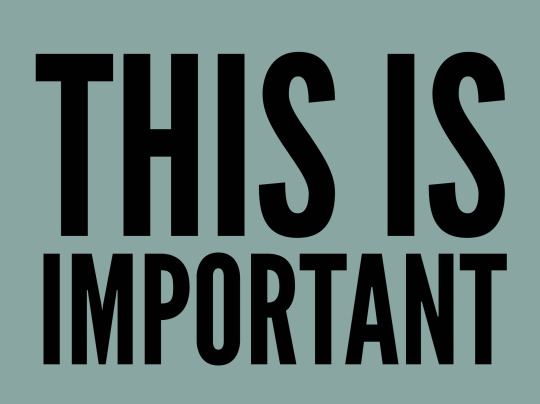
#free congo#don't forget about the congo#tesla#glencore#cobalt#nickel#human rights abuses#allegations#mining industry#renewable energy#clean energy#environmental impact#worker mistreatment#corruption#ethical sourcing#global supply chain#corporate responsibility#renewable energy transition#accountability
226 notes
·
View notes
Text
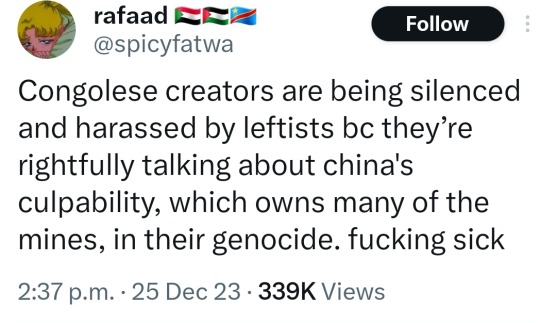


#feminist#feminism#social justice#free congo#congoisbleeding#imperialism#colonial violence#current events#cobalt#congo genocide#dr congo#democratic republic of the congo#congo#drc#neoliberal capitalism#fuck capitalism
2K notes
·
View notes
Text


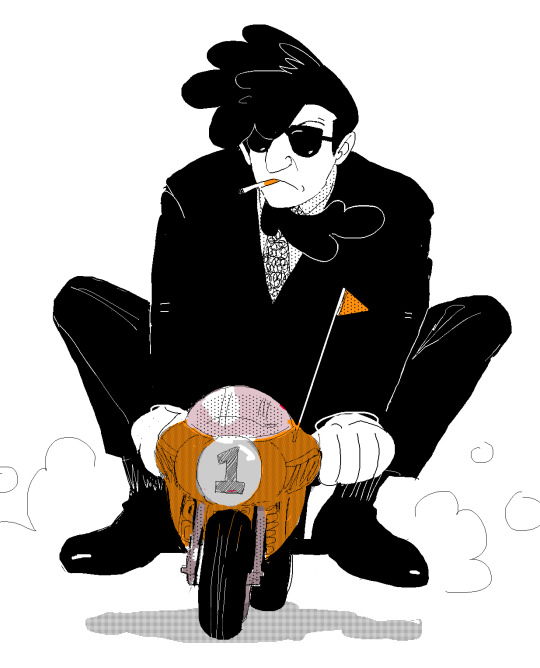

big ol pile of sketches. I hc cobalt has a big dog that takes care of him :3
938 notes
·
View notes
Text
A newspaper in my country has interviewed Siddharth Kara, one of the experts on what's going on in the cobalt mines in Congo. I think it's very well explained and a must-read to get an overview of this huge human rights violation that is going on. So here I translate it to English, hoping it will reach more people.
Siddharth Kara: "Every time we buy a new mobile phone, we put our foot around the neck of a child in the Congo"
Interview with the author of Cobalt Red: How the Blood of the Congo Powers Our Lives
"The poorest people in the world, including tens of thousands of children, dig the earth in toxic and very dangerous conditions to find cobalt," says journalist and writer Siddharth Kara (Knoxville, Tennessee, USA, 1974). The rechargeable batteries of our mobile phones, tablets, laptops or electric vehicles need this mineral that thousands of children, men, women and elderly people extract from the Congolese mines in inhumane conditions. Kara went there because he had specialized in research on slavery, and in Congo he found a modernized form of slavery. "Time has passed, but the colonial mentality has not," he explains. Everything he saw there and what was explained to him is recounted in Cobalt Red: How the Blood of the Congo Powers Our Lives (a book that does not have a translation into Catalan, but which has now been translated into Spanish, by Capitán Swing). The photographs and videos illustrating this interview were taken by himself.
—Was it difficult to write this book?
—Yes. Firstly, because of the specific difficulty of this area of the Congo: very dangerous, very militarized. There are armed militias. And for the local people there it is dangerous to talk to foreigners, because it can bring them consequences. It was difficult to get there, and then it was difficult to build trust with the people who worked there. I only managed it thanks to this trust, which we achieved little by little, until we were sure that we could do the research with guarantees and ethically.
—What drove you to the Congo cobalt mines?
—I had been doing research on slavery since 2000. Around 2016, some African colleagues contacted me and said: “Siddharth, something terrible is happening in the cobalt mines of the Congo, maybe you should go there”. I had no idea what cobalt was. I thought it was a color used for painting. I didn't know it was used for rechargeable batteries. It took me a couple of years to grasp its importance. Then I started making contacts to travel there, and in the summer of 2018 I went there.
—And what did you find there?
—The suffering and degradation I saw there were so intense that I decided to return there often to write a book. Hundreds of thousands of the world's poorest people, including tens of thousands of children, dig the earth in toxic and very dangerous conditions to find cobalt and put it into circulation, in a distribution chain that goes to the rechargeable devices and cars that people like you and me use every day. It was a human apocalypse, a total invasion of human rights and the dignity of the Congolese people.
—Could you describe what a mine like this is like, physically? How should we imagine it?
—Those who are at the top of the economic chain of cobalt exploitation like to distort the truth, and use the term "artisanal mine". This way, they evoke a kind of picturesque activity, but on the ground it is a dangerous and degrading job. A mine of this kind is a mass of tunnels, pits and trenches filled with thousands of people who dig with shovels, pieces of metal or directly with their bare hands. They fill a sack with earth, stone and mud. Some children rinse it in toxic pools to separate the mud from the cobalt stones, which a whole family pours into another sack. It might take twelve hours to fill a forty-kilo sack or two. For each sack they get paid a few euros, very few, and that's how they live every day. They survive.
This video was filmed by Siddharth Kara: [you can watch the video in the interview link, freely available without any paywall, here]
—Is there any rational organization in these mines? Is there someone who decides who does what to optimize work?
—Well, there is a whole gear designed so that the poor and the children of the Congo produce hundreds of thousands of tons of cobalt every year. There, work is usually divided by age and gender. Digging tunnels, which requires a lot of strength, is usually done by young men and teenagers. The digging of small pits and trenches that can be less meters deep is done by women and smaller children. Rinsing this toxic cobalt is usually done by the children. The merchant system to exploit these families and sell the cobalt they produce to the formal industrial mines is very well set up.
—What else do these people at the top of the chain invent?
—Another fiction they invent is that there is a difference between industrial and artisanal mining, and that they only buy from the industrial one, where there is no child labor. Not true: all cobalt is mined by children. All the cobalt that the children and peasants extract goes straight to industrial mining. In addition, there is no way to separate what comes from a bulldozer and what comes from a child, once it all pours into the same place in the facility that does the industrial processing before this cobalt is sent out of the Congo.
—You explain that the situation is particularly abusive for women.
—Yes. It is a lawless land, and violence is the norm. Women and girls always bear the brunt: they are victims of physical and sexual violence, and almost no one talks about it. It is a major tragedy: they are victims of sexual assaults that are committed in the mines themselves, while they collect the cobalt that we have in our mobile phones.
—You refer to all of this as a new episode of slavery. It is not the first time that the Congo has a decisive material for Western economic development. It happened with uranium for nuclear bombs, for example. History repeats itself.
—Exactly. It is important for people to understand that we are not witnessing an isolated case, but the latest episode in a long, very long, history of looting of the Congo, a very resource-rich country, dating back to the colonial period. The first automobile revolution required rubber for tires. The Congo had one of the largest rubber tree rainforests in the world. King Leopold [of Belgium] deployed a mercenary army of criminals and terrorists to enslave the population and make them work to get it. This inspired Joseph Conrad's novel Heart of Darkness. The Congo also has abundant reserves of gold, diamonds, nickel, lithium and other metals and minerals that make components for electronic devices…
—These mercenaries deployed by King Leopold, are they still there today, in one way or another?
—Yes. On the ground there are militias, or the army, or private security forces that the mining companies hire and that, sometimes, in addition to monitoring, do the work of recruiting children. Under the threat of an occupation, they force an entire town to dig. It's atrocious: we live in an age of supposed moral progress, where everyone shares the same human rights, and yet our global economic order has its knee on the necks of the children and the poor of the Congo, with this huge demand for cobalt that has to fuel the rechargeable economy.
—Has no Western country or international body done anything to stop it?
—No. No western country, no government, no big business has lifted a finger to address this tragedy. They talk about maintaining human rights standards in their supply chains, they talk about environmental sustainability, but it's only talk. That is why it is very important that journalists and researchers set foot on the land of the Congo and listen to what the Congolese have to say: that no one protects their rights or their dignity, that they are erasing the environment, that mining it is not done in a sustainable way and the whole countryside is polluted and destroyed by the mining operations. It is enough to walk ten minutes around a mine to see it.
—Does the same happen in all mines? Large Western companies that use cobalt often claim that theirs comes from artisanal mines that meet standards.
—Have they gone there? There is no decent mine in the Congo. It does not exist. I'll be happy to take any CEO of any tech company to their mines, where their cobalt comes from. We'll stand there, watching them extract it, and take a selfie with it. Everyone will realize that what is seen behind us is not decent. You will see destruction, millions of trees felled, installations that emit toxic gases that fall on the surrounding towns, on the children, on the animals, on the food. There is no decent mine in the Congo. And they know it. But who will believe the voice of a Congolese if they can drown it out with proclamations of human rights while they continue to make money without measure?
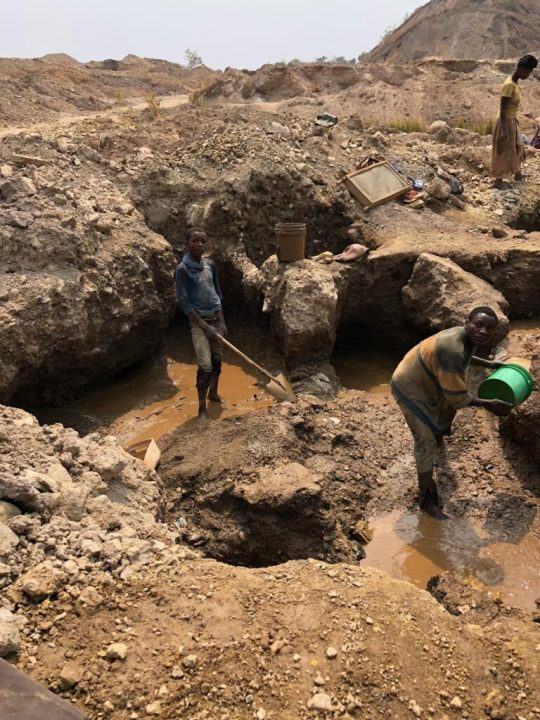


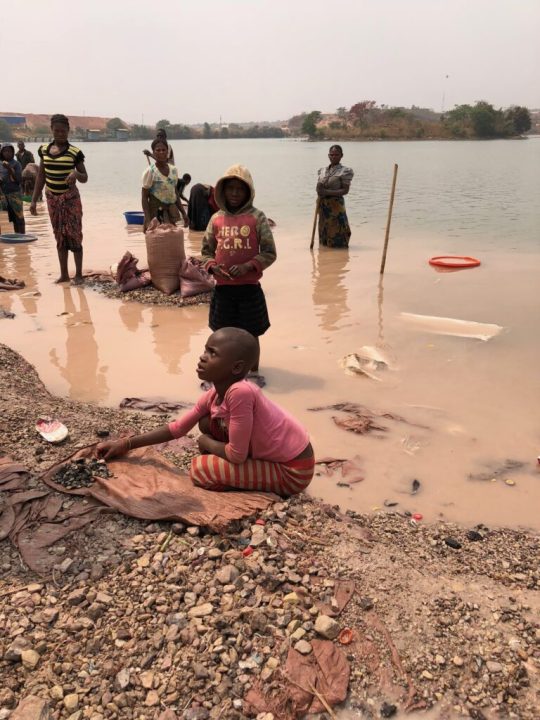
—Can you explain the role China plays in all of this? You say that it controls the supply chain.
—Yes. China controls about 70% of mining production in the Congo. Why do we accept China saying its mines are decent, if they don't even protect the human rights of their own people? Why do we accept a technology company or a car manufacturer saying, "My Chinese partners say they protect human rights there, and that's enough for me"? Why do we accept it?
—Why do you say that a certain transition to green energy is absolute hypocrisy?
—When the calls in favor of this transition consist of proposing to consumers that they buy electric vehicles instead of gasoline cars, this is hypocrisy. Because the cobalt and other elements that are used for the batteries of these cars are extracted using methods that are catastrophic for the environment. While in one part of the world we say we want to save the environment and leave a greener planet to our children, in another we are destroying both the planet and the future of their children. How can you save only part of the planet, turning the rest into a toxic dump? How can we give a green planet only to our children, while we let other people's children die? This is hypocritical.
—It is a reflection of the domination that the global north maintains over the south.
—We have never given Congo the opportunity to benefit from its own resources. It is a colonial mentality: time has passed, but the colonial mentality has not. It is the same type of colonial plunder from a century and a half ago. It is colonial to say: "Look, we need this, they have it, we take it from them in any way and, when we no longer need it, we leave a catastrophe behind us". There are companies that, recently, have started to pretend that they are becoming aware of this and promised that they would try to use batteries that did not have cobalt, but in reality they said: "Well, we've been caught, we'll look for another mechanism". And they do nothing to solve the catastrophe. Even if we no longer needed cobalt tomorrow, we would have to repair the destruction we have caused these past fifteen years.
—It's the big companies who should be required to react, but what do you think a Western consumer who has gotten upset reading you could do?
—The first step to progress in the conquest of human rights is always to make injustice known. Contribute to make everyone knows. Most people are good and, in their hearts, want no part of injustice. It is the few who move based on avarice and greed who pollute the rest of humanity. Outreach and awareness is the first step because it will inevitably activate a lot of people. Change always starts like this. In the case of cobalt, the second step is to think about our consumption habits. Every twelve months, the technology company I bought my phone from offers me a new one. Do I really need it? Every time we buy a new mobile phone, we put our foot on the neck of a child in the Congo. Better think twice, then.
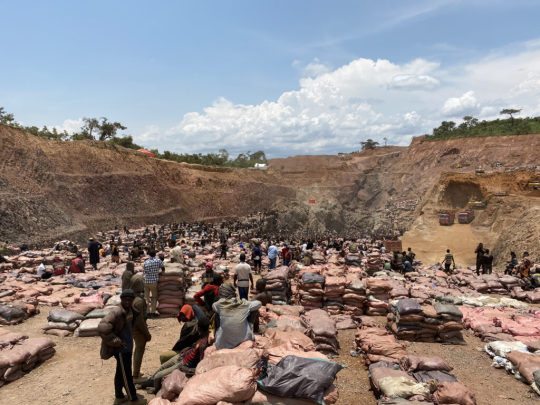
#congo#human rights#electric vehicles#electric cars#colonialism#labour rights#china#environmentalism#rape culture#feminism#slavery#africa#cobalt#labor rights#anti racism#free congo#siddharth kara#childrens rights#history#💬
178 notes
·
View notes
Text

A finished necklace with these painted sea pottery pieces. And sea glass beads of course.
#sea pottery#ernest shackleton#hms endurance#polar explorers#miniature#sea glass#antarctica#tall ship#sailing ship#nautical art#necklace#boho#cobalt#my art
2K notes
·
View notes
Text




Millions must embrace Cobalt
#mighty atom#tetsuwan atom#cobalt#osamu tezuka#cobalt astro boy#astro boy#astro boy 1963#tetsuwan atomu#astro boy fanart#fanart
116 notes
·
View notes